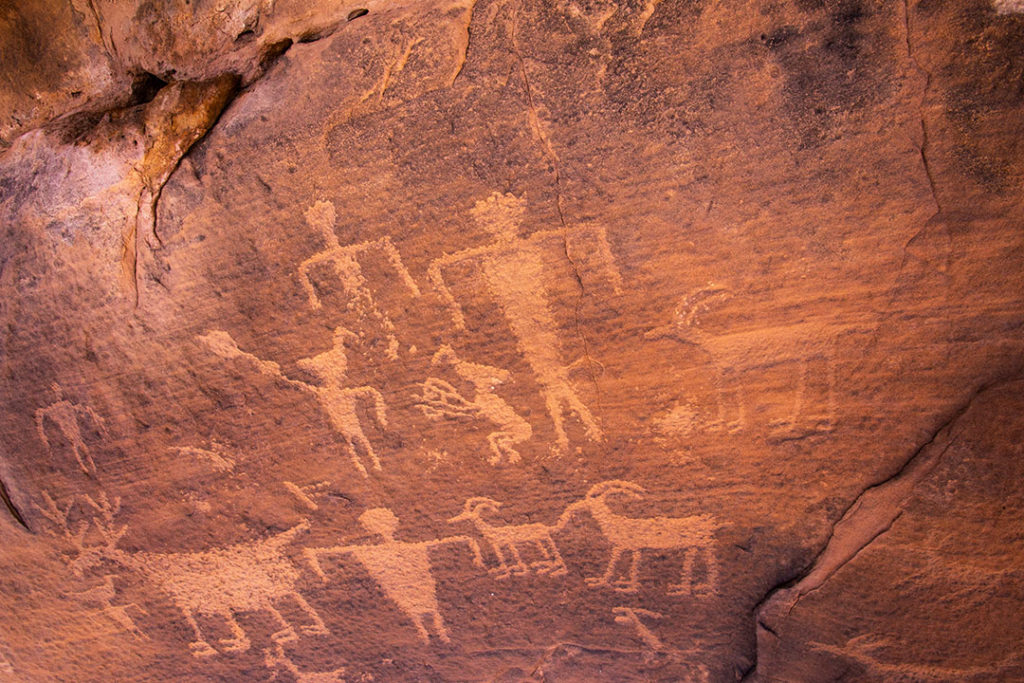FOR IMMEDIATE RELEASE
Approximately 57,000 acres of remote, wild, and culturally significant public lands
temporarily spared from oil and gas development
Contact: Stephen Bloch, Southern Utah Wilderness Alliance, 801.428.3981, steve@suwa.org
Landon Newell, Southern Utah Wilderness Alliance, 801.428.3991, landon@suwa.org
Salt Lake City (July 18, 2019): For the third time in less than three months, the Bureau of Land Management (BLM) has reluctantly recognized that its rushed “lease first, think later” mentality to oil and gas leasing and development under the Trump administration violated the law.
In a recent court filing, the BLM told a federal district court judge that the agency plans to revisit its decision to sell thirty-six oil and gas leases and open up approximately 57,000 acres of public lands near Bears Ears, Canyons of the Ancients, and Hovenweep National Monuments in Utah for development.
The BLM’s decision is in response to litigation filed by the Southern Utah Wilderness Alliance (SUWA) challenging the BLM’s March 2018 and December 2018 oil and gas lease sales in southeast Utah’s Monticello field office (more information here). The BLM is pulling back its leasing decisions because the agency has recognized that it failed to fully analyze the greenhouse gas emissions and climate change impacts of those decisions in determining whether leasing is appropriate in the first instance.

The thirty-six oil and gas leases at issue encompass some of the most culturally and archaeologically rich public lands in the United States. These lands include cliff dwellings, pueblos, kivas, petroglyph and pictograph panels, and Chaco-era (circa 900-1150 A.D.) great houses. Numerous Native American tribes consider these sites sacred. Many of the leases suspended by the BLM also encompass lands identified by the BLM as possessing wilderness characteristics; that is, the agency has determined that the lands appear natural and undisturbed and provide outstanding opportunities for solitude and unconfined primitive types of recreation such as hiking, wildlife viewing, and camping. Photographs of cultural sites on the leases at issue are available here.
“The Trump administration’s BLM is writing the textbook on how to make an uninformed and unlawful leasing decision,” said Stephen Bloch, Legal Director for the Southern Utah Wilderness Alliance. “Utah BLM’s formula has been to lease as much public lands as possible, as quickly as possible, and with as little analysis or public involvement as possible. Unsurprisingly, this approach to oil and gas leasing is unlawful.”
This is the third time in less than three months that the BLM’s Utah state office has been forced to pull back a leasing decision for violating federal environmental laws. Over this period of time, the BLM has been forced to pull back 138 leases, consisting of approximately 267,000 acres of public lands in Utah. In May 2019, the agency took similar steps to pull back eight other oil and gas leases located near Bears Ears National Monument and Canyonlands National Park. More information on that decision is available here. One month later BLM pulled back more than 204,000 acres of oil and gas leases located in the San Rafael Desert region for the same reason. More information on that decision is available here.
Notably, the three recent decisions by the BLM to pullback oil and gas leases are not isolated events. All of the agency’s leasing decisions in Utah over the past two years suffer from the same legal flaws that forced BLM to set-aside its leasing decisions in these instances. In other words, the agency will likely be forced to pullback hundreds of thousands of acres of additional oil and gas leases across Utah that it unlawfully offered and sold for development.
“The BLM will be forced to pull back all of these leasing decisions,” said Landon Newell, Staff Attorney with the Southern Utah Wilderness Alliance. “Each decision suffers from the same legal flaws. The BLM made this bed; now it has to lie in it.”
Over the past two years, the Trump administration’s “energy dominance” agenda has suffered several significant legal setbacks. Of particular importance here, in March 2019 a federal judge in Washington, D.C., held that the BLM had failed to properly analyze the impacts of its oil and gas leasing program on greenhouse gas emissions and climate change. This landmark decision requires the BLM–for the first time–to provide a detailed accounting of these impacts in each leasing decision. This court decision spells trouble for all the Utah BLM’s leasing decisions over the past two years: the agency made the same unlawful mistake in each.
###

